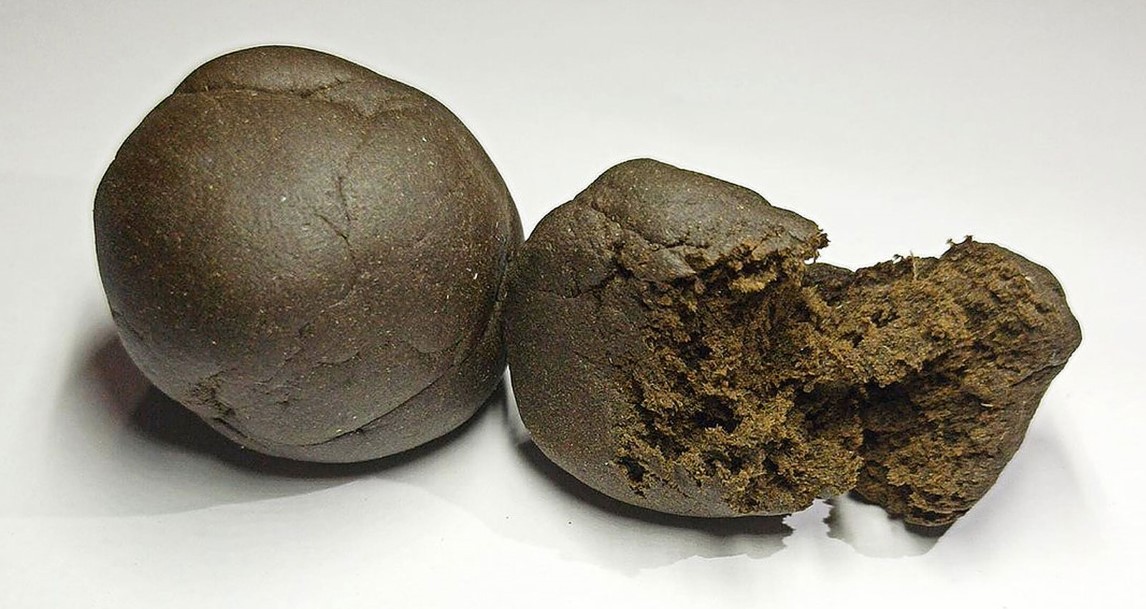Charas is often considered the oldest form of hashish. While there are several theories from different researchers and authors, it is commonly accepted that this type of hand-rubbed hash is, indeed, much older than any other form of collecting resin glands from the cannabis plant such as dry sieving, which is likely to be the second one.
There is no written evidence about how or when hashish was discovered. We do have some texts from Ibn Wassyah about hash and its effects on the human body from the Xth century in Persia, but have no accurate idea about its exact place of origin or first method used to produce it.
However, and if we try to approach this subject from a logical point of view, it seems obvious that charas is likely to be the first method ever used to collect cannabis resin. For the moment, let’s stick to proven facts that we know about ancient cannabis cultivation: we know cannabis has been grown under controlled conditions for millennia. We also know that, while far away from modern hybrids, these ancient cannabis plants produced trichomes. Finally, we also know that there was obviously no automated machinery to harvest plants at that time, so all work must have been done manually.
It is not strange, then, to think that the people harvesting those plants by hand soon realized that, after a while of handling fresh cannabis flowers, their fingers would get coated with a sticky, brownish substance. But when did they realize that that substance was actually hash and could be produced by just hand-rubbing fresh buds? When did they realize about the properties and effects of this substance? Did all that happen in the same area? We just don’t know.
As we’ll discuss in further articles, dry sieved hash seems to be, in terms of history, a lot younger than hand-rubbed resin or, as we normally call it today, charas or chars. Indeed, it was not until global demand for hash raised (14th-15th century) that dry sieved resin became the most popular form of hash, usually coming from areas with dry climates.
On the other hand, in those places where the climate is more humid, it can be a true struggle not only to sieve dried buds, but also to actually dry the flowers enough to be smoked. Thus, it is not a coincidence that traditional charas-producing areas are often those hit by the Asian monsoon, such as Nepal or North India.
Places where cannabis has been grown for centuries but where, due to climate conditions, it’d be barely possible to get some good dry sieved resin without the help of modern machinery. The technique itself is relatively simple: the producer waits until the plants are mature. When the time comes, branches are cut and all fan leaves are removed. He then thoroughly washes his hands and allow them to dry in the sun in order to leave as little contaminants as possible.
Once his hands are completely dry, he starts rubbing a branch up and down with his palms until a thin layer of charas gets stuck to them. He then removes the sticky resin from his palms and starts rubbing a new branch, leaving the first one for getting a second grade charas later on.
In this way, different grades of charas can be obtained depending on how much time the producer rubs each branch. The longer he rubs the flowers, the more chances to contaminate the resin with small plant debris, pistils, etc. Apart from the time factor, gently rubbing the branches produces a much cleaner resin, so patience, experience and care are needed in order to get the best results.
As you can imagine, considerable time is needed to produce just a few grams of charas, so it is not strange that dry sieving became so popular as soon as the demand raised from Asia to the Near East. It’d take ages and a myriad of producers to meet hash demands with charas!
When it comes to charas, and if you ask anyone with a little knowledge about this type of hash, the same exact words will show up, almost magically: Temple Balls. Indeed, this is probably the most popular form of charas around the world, and often considered the best among all of them. While charas has been traditionally produced in Kashmir, North India and Nepal, it is the latter that is known as the true capital of charas.
The reason for this fame has a lot to do with the pilgrims of the Hippy Hashish Trail, a group of westerners (hippies, adventurers and yes, drug smugglers) who, during the 60’s and 70’s, followed a route through some of the most renowned hash-producing countries in the world, such as Morocco, Lebanon, Pakistan, Afghanistan, India and Nepal.
These round pieces of top grade hash are known for their spicy and earthy aroma, a blend of exotic nuances that transports you to some ancient temple on the foothills of the Himalayas. Apart from Nepal, Kashmir and the Himachal Pradesh (North India) are also renowned charas-producing areas, with famous products like Malana Cream (from the Parvati valley) or Idukki Gold (also known as Kerala Gold, this one coming from the South of India).
Among our strains you can find some of the traditional plants to make charas from. It is the case of our Nepalese, a strain that has been used to produce some of the finest charas in the world for decades. Another option is our Kashmir strain, coming from Azad Kashmir area and known for its potent effect. Finally, you can also find Idduki, this one coming from the Kerala district in south India and famous for its energetic high.
